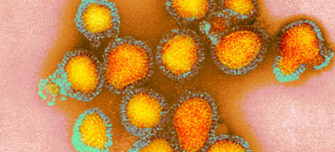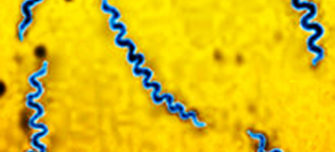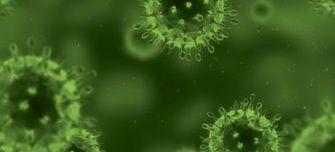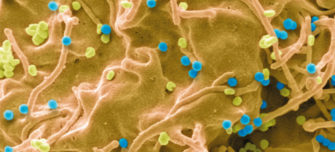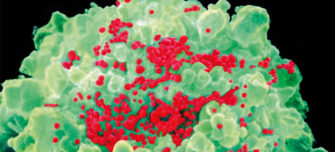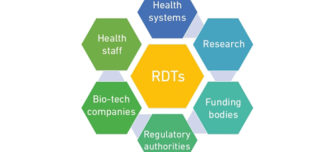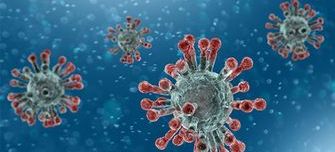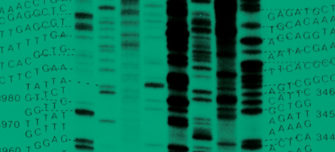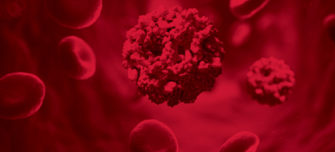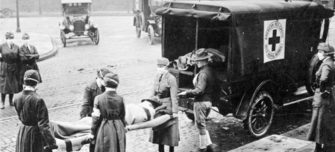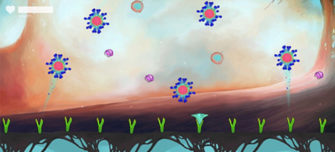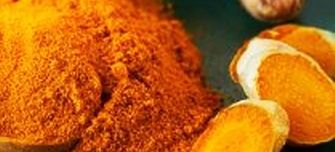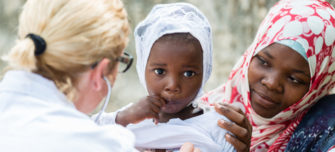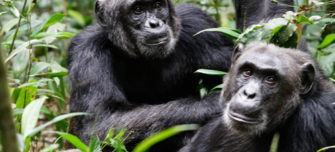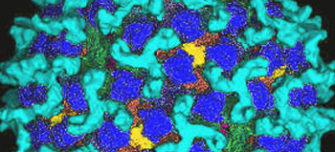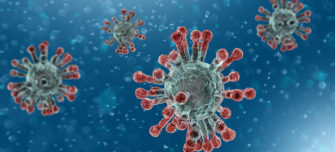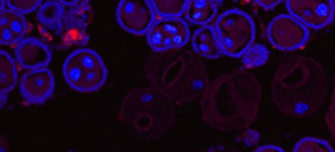Resources and further reading
-
Viruses
Viruses are the smallest of all the microbes. They are said to be so small that 500 million rhinoviruses (which cause the common cold) could fit on to the head of a pin. They are unique because they are only alive and able to multiply inside the cells of other living things. The cell they multiply in is called the host cell.
-
Microbiology Today: Halting Epidemics
Disease outbreaks can have a significant impact on human populations, and they need to be closely monitored and contained to limit their potential spread. Following the outbreaks of the Ebola and Zika viruses in recent years, this issue of Microbiology Today puts a spotlight on the topic of 'Halting Epidemics'.
-
Microbiology Today:The Mobile Microbe
In this issue of Microbiology Today, we explore global surveillance and responses to the threat posed by infectious diseases, Bluetongue virus and the Great Pox.
-
One year of SARS-CoV-2 evolution
Researchers published an in-depth look at the SARS-CoV-2 mutations that have taken place during the past year in the Journal of General Virology.
-
Atypical HIV test results when PrEP is prevalent – a need for vigilance in the laboratory
In this article featured in Microbiology Today we explore the diagnostic challenges of those taking PrEP with atypical test results and how this can impact future HIV testing.
-
HIV in pregnancy
The long-term outlook for people living with HIV has been revolutionised by early and lifelong use of combination antiretroviral treatment (cART). Individuals effectively treated with plasma HIV RNA <50 copies ml–1 (‘undetectable’) can have a normal life expectancy.
-
Viruses: life-saving drugs?
This Microbiology Today article explores how viral vectors are produced and the development of viral gene therapy treatment.
-
The quest for an HIV vaccine
Vaccines are our ‘weapons of mass protection’, responsible for the eradication of smallpox and the huge reduction of yellow fever, polio, measles and cervical cancer. So why don’t we have an efficacious HIV vaccine, 35 years after the discovery of the virus?
-
Improving the development and deployment of rapid diagnostic tests in low- and middle-income countries
Rapid diagnostic tests (RDTs) are revolutionising how disease is diagnosed and treated, and are helping to deliver higher standards of healthcare and greater efficiency across public and private healthcare sectors, as well as at the community level. Find out why in this article in Microbiology Today.
-
Accelerated clinical and technology trials in response to the Ebola virus epidemic
Read about the researchers who sequenced Ebola virus genomes from newly diagnosed cases quickly enough to provide vital information to guide the response to this tragic epidemic, which had already claimed over 10,000 lives.
-
Immunity to coronaviruses: what do we know so far?
A new review written by top UK virologists, discusses the findings from over 40 studies on coronavirus immunity and what they could mean for the COVID-19 pandemic.
-
Repurposing public health systems to decode COVID-19
Research published in the journal Microbial Genomics describes how national surveillance systems can be linked with the UK Biobank.
-
A new, 20-minute assay for COVID-19 diagnosis
Researchers have developed a new test that can diagnose COVID-19 in just 20 minutes. The findings, published in the Journal of Medical Microbiology, show the rapid molecular test called N1-STOP-LAMP, is 100% accurate in diagnosing samples containing SARS-CoV-2 at high loads.
-
Coronastream blog series
In this special blog series, medical microbiologists led by Dr Tim Inglis summarise some of the research that will be essential to inform COVID-19 countermeasures.
-
Answering questions about COVID-19
Dr Lucy Thorne, Research Fellow at University College London (UCL) has produced a helpful FAQ’s list to support those who want to better understand some of the terms used by politicians and in the media, what SARS-CoV-2 is, and the measures being developed to control the pandemic.
-
Working with government during a public health crisis
During the COVID-19 pandemic, politicians are looking to experts from the scientific community to inform the government’s response to control the spread of the virus. In this blog, past President of the Microbiology Society Professor Sir T. Hugh Pennington discusses his experience as Chairman of a number of Public Enquiries into outbreaks of Escherichia coli O157 in the UK.
-
Covid-19 testing in the UK Lighthouse Labs
In this blog, having just finished 7 weeks at the Milton Keynes Lighthouse Lab, PhD student Ellie Boardman reflects on what it was like.
-
COVID-19 testing in the Milton Keynes Lighthouse laboratoy
In April 2020 members of the Microbiology Society were given the opportunity to assist with testing efforts for COVID-19 in one of three 'Lighthouse laboratories'. Connor Hayward, PhD student at the University of Leeds, signed up to contribute to the testing efforts. Here, Connor reflects on how the testing process varies from his PhD research and reflects on his time at the lab.
-
Life after a pandemic: What we can learn from the Spanish flu?
As much as SARS-CoV-2 (the virus that causes COVID-19), and the Spanish influenza pandemic of 1918 are very different, the societal reactions during both pandemics are similar, as we explore in this blog.
-
JMM Editor's Choice: validating a rapid test for SARS-CoV-2
Professor Arunaloke Chakrabarti discusses Validation of a single-step, single-tube reverse transcription loop-mediated isothermal amplification assay for rapid detection of SARS-CoV-2 RNA’ which was chosen as Editor’s Choice for the September 2020 issue of Journal of Medical Microbiology.
-
Developing a COVID-19 educational app
In June 2020, Glasgow-based serious game studio Game Doctor was awarded a £50,000 grant from Innovate UK to develop a casual mobile game to educate young people on coronavirus. Here, Game Doctor founder and CEO Dr Carla Brown discusses the project and invites the microbiology community to test the game.
-
Turmeric could have antiviral properties
Curcumin, a natural compound found in the spice turmeric, could help eliminate certain viruses, research has found. A study published in the Journal of General Virology showed that curcumin can prevent Transmissible gastroenteritis virus (TGEV) – an alpha-group coronavirus that infects pigs – from infecting cells.
-
Researchers are hunting for viruses that could cause the next pandemic
Scientists around the world were looking for the next SARS or MERS virus in wildlife from disease emergence ‘hotspots’. Find out more about their research in this blog.
-
Boosting natural immunity to tackle malaria
Scientists are exploring a novel approach to fight malaria in regions of the world where it is endemic. The strategy is to give anti-malarial medicines to people living in malaria endemic areas who are exposed to naturally acquired infection, with the aim of boosting naturally acquired immunity.
-
Developing a severity assessment test for Ebola infection
Researchers are looking for new ways to predict the disease outcomes of infection with Ebola virus. As part of her PhD project, Dr Jocelyn Pérez Lazo aimed to predict the course of infection – including how severe disease would be in the patient – by measuring host biomarkers.
-
Can we model how viruses move between species?
In this blog, we learn more about the research of Dr Ben Longdon from the University of Cambridge, who is working to understand which viruses will emerge to cause severe illness in humans, after jumping the species barrier.
-
Can we use models to predict virus outbreaks?
By 2050 there will be nine billion people in the world, and ever greater numbers will get their dietary protein from animal sources. As a result, we need to increase livestock production and ensure its sustainability. Learn more about how climate change will raise a number of challenges to do this, in this blog.
-
JMM Editor's Choice: understanding humoral immunity against HPV
Dr Direk Limmathurotsakul discusses the paper ‘Correlation between cervical HPV DNA detection and HPV16 seroreactivity measured with L1-only and L1+L2 viral capsid antigens’ featured in the Journal of Medical Microbiology.
-
Could our internal clocks be a mechanism for viral resistance?
In this blog, Dr Rachel Edgar investigates the game of strategy and timing that has played out for hundreds of millions of years, as organisms’ immune systems defend against the unrelenting invasion of pathogens.
-
Microbe Talk: SARS-CoV-2 and Covid-19 research in the UK
In this episode of Microbe Talk, we spoke to Professor Peter O’Hare, Dr Lindsay Broadbent and Dr Steve Griffin about ongoing SARS-CoV-2 and Covid-19 research in the UK.
-
Microbe Talk: Meet Wolbachia – the bacteria that could rid the world of dengue
Scientists in Australia are currently testing a new method of preventing dengue that could be revolutionary – using a strange group of bacteria called Wolbachia. Listen to this episode of Microbe Talk to learn more about their research.
Image credits:
CDC / Science Photo LibraryJames Cavallini/Science Photo Library
iStock/AlexRaths
Steve Gschmeissner/Science Photo Library
iStock/selvanegra
NIBSC/Science Photo Library
iStock/Mohammed Haneefa Nizamudeen
iStock/Naeblys
White Rose Mechanistic Biology DTP
iStock/Avatar_023
M. Costa
iStock/Motortion
Ronald Woan, Flickr under CC BY-NC 2.0
AJC ajcann.wordpress.com on Flickr under CC BY-NC 2.0
Richard Jones on Flickr under CC BY 2.0
Penn State on Flickr under CC BY-NC 2.0
Wikimedia commons/St. Louis Post Dispatch, 1918
Game Doctor
iStock/Professor25
iStock/BrianAJackson

